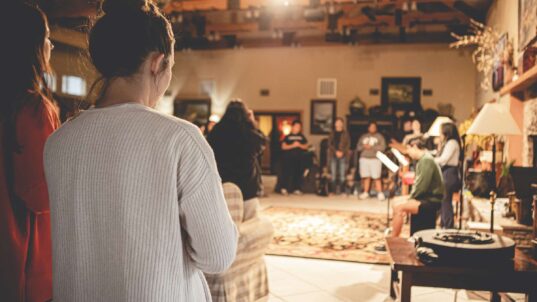
Consider the following imaginary scenario, in light of recent moves by a number of states to regulate what they perceive to be liberal bias in higher education. Dr. Oliver Madsen was appearing before his college’s General Education Curriculum Committee. The Committee was tasked in part with reviewing all GenEd courses to ensure that there were no liberal biases nor any promotion of social justice for any race, gender, or social class. This was a mandate from the state legislature for all public colleges and universities. The legislature also insisted that they be represented at the course review meetings. Gabe Costas was the legislative representative who was asked to sit in on the meetings. The following is a partial transcript of the questioning.
Costas: I notice you use a lot of discussions in your classes. It looks like a third of your class. Isn’t that just a way for you to avoid teaching?
Madsen: Not at all. Research shows that the highest form of learning happens when students engage their knowledge through actions or through talking with their peers. The retention rate is 90% when they are saying or doing something with the course material. The lowest retention comes when students are being passive, like simply listening to a lecture. The general retention rate for a lecture might be only around 20%.
Costas: Well, you do understand that the legislature has an interest in making sure that tax dollars aren’t funding political indoctrination? That’s why I’m here. If you had lectures notes to show me, I could see whether you’re trying to indoctrinate students into some sort of social justice agenda. But what am I supposed to tell my colleagues if so much of your course is based on student discussions?
Madsen: You could tell them that I set up the student discussions to have three different learning goals–none of which are about a particular political agenda. I call this approach “triple play discussions.” The first play is that they learn how to apply what they’re learning in a concrete, practical situation. Second, is that they learn how to participate with one another in a collaborative discussion. And the third is that they learn how to design and facilitate a productive discussion. From all this, they learn a lot about conducting productive meetings. Employers tell us that these skills are really vital–and they’re so grateful that someone is actually teaching them.
Costas: But how can we be assured that students aren’t using these discussions to indoctrinate their classmates in some leftist way? What if they’re just silencing the conservatives in the class, who feel too outnumbered to speak up?
Madsen: Well, first of all, the guidelines I give the students is that in their discussions they are supposed to be exploring the topic from different perspectives. So, if their group is only exploring one particular point of view, they’re not going to do very well in the course. Second, with this framework, I’ve found that students with with conservative points of view haven’t been shy about expressing them.
Costas: I’m sorry but I’m still hung up on the idea that a third of this class is student discussions. It seems like a waste of taxpayers’ money. How do you justify a class where students just talk?
Madsen: Don’t take my word for it. You can ask Cynthia Akers. As you know she is the CEO of the largest employer in the state. She’s told me that some of her most promising new hires have taken this class. She will not promote anyone who has not learned the kind of skills we focus on in this course. If you aren’t satisfied by what she tells you, I can give you a list of 18 to 20 of the top CEO’s in the state who will tell you pretty much the same thing.
That ended the questioning, but Costas didn’t seem to be satisfied. He had a mandate to report back to his colleagues on leftist bias in college courses, but he hadn’t quite found it.
As universities are facing more and more accusations of liberal bias, it’s important to structure classes so that all perspectives on issues are presented. One way to do this is to use the triple play strategy that Madsen uses. When discussions have a three-fold purpose, the opportunities for a negative impact from biases are minimized.
* * *
“Being surrounded by diverse points of view pushes us beyond our comfort zones. And when people and teams bring multiple perspectives and experiences to the table, the discussions are deeper, the decision-making process is better, and the solutions are stronger.”–Pierre Nanterme, former CEO of Accenture
This post is part of our “Think About” education series. These posts are based on composites of real-world experiences, with some details changed for the sake of anonymity. New posts appear on Wednesdays.



